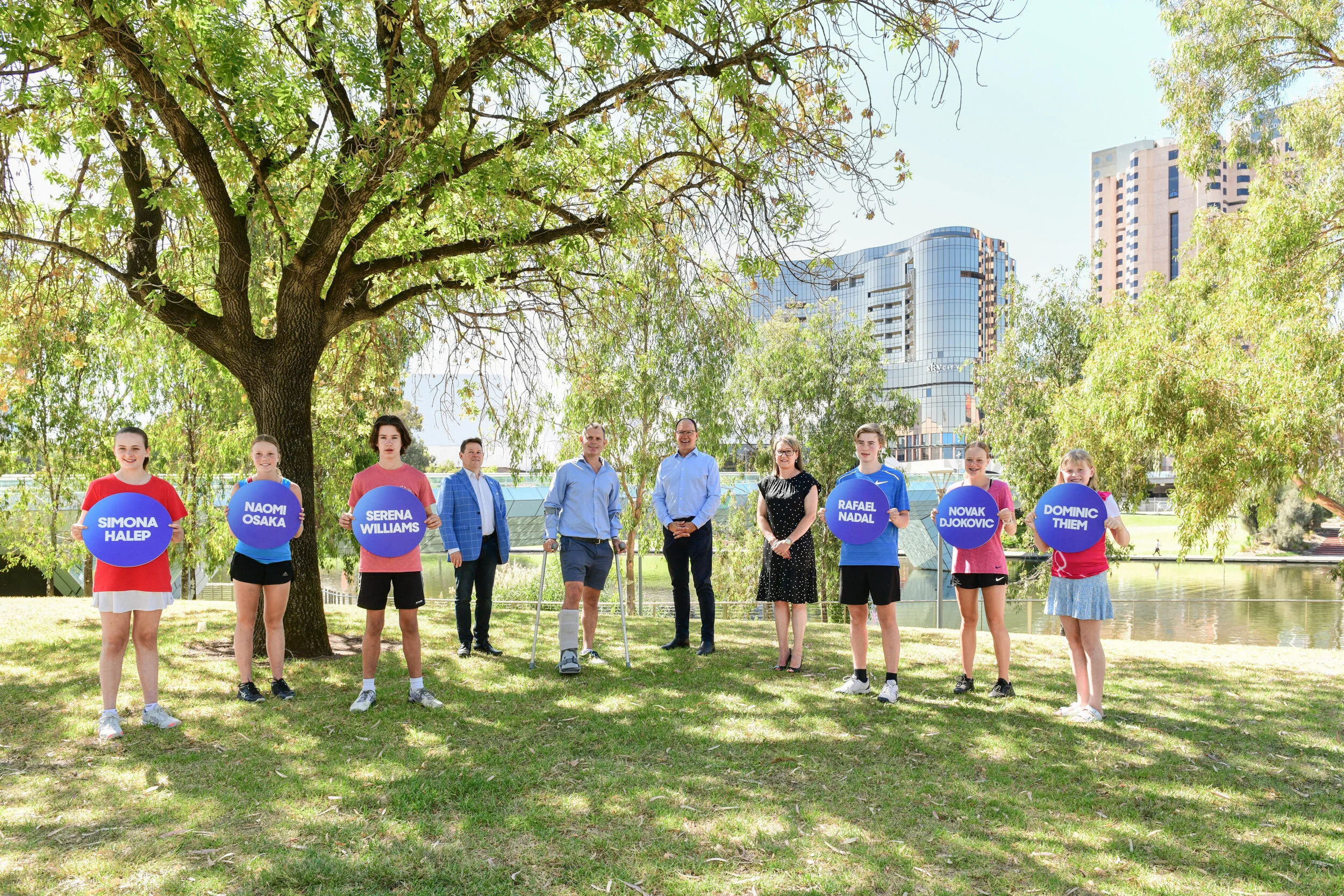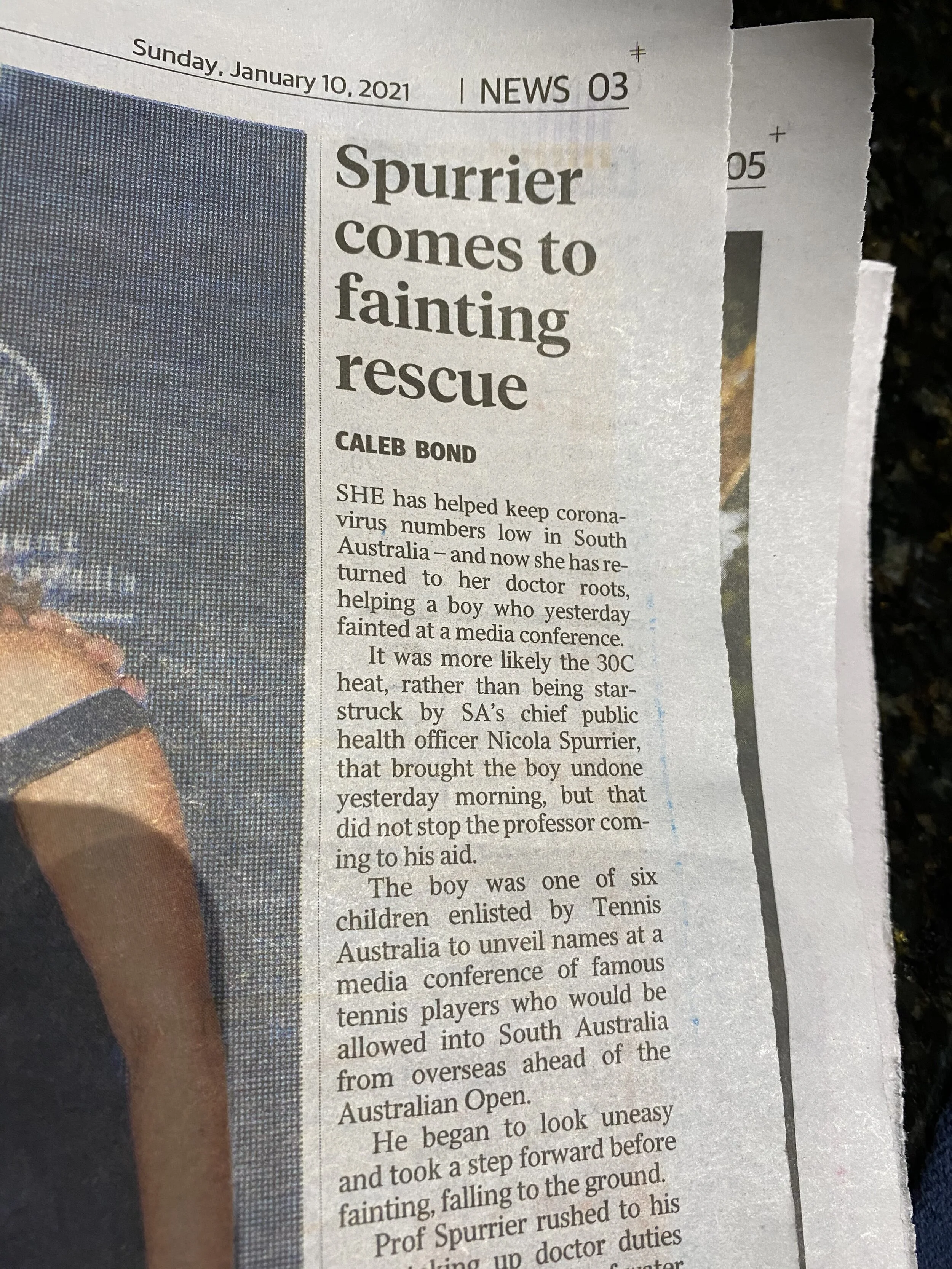What We’re Called To Do
South Australia’s Chief Public Health Officer Professor Nicola Spurrier during a Tennis Australia media opportunity held at Memorial Drive, Saturday 9 January 2021. (Image: Sue McKay / Getty Images)
The weekend was too large for me and I didn’t have time nor energy to write until now. It did give me lots of fodder though, and a swift reminder about another related blog post I must finish, to do with a career change that’s underway.
All of today, Sunday, was pretty much spent finishing and recovering from Saturday’s work.
And as for Saturday’s work, well that really began on Friday night with a late request (12 hours notice) from Getty Images to photograph a Tennis Australia media opportunity.
Was it convenient? No.
Did I say “sorry I’m not available”? Hell no.
Looking back, did I enjoy it? That’s to be discussed in the aforementioned beckoning blog post...
So I changed plans, shuffled schedules, recharged equipment batteries, researched the assignment and arrived at Tennis SA by 9:00am to further prep.
It was hot. Hot. Hot! I was told the press conference was to take place at the top of the steps of the Adelaide Oval concourse, with the roof of Memorial Drive in the background. The direction of the sun meant that it would be beaming on the heads and backs of the media pack but more importantly on the faces of those speaking into microphones, which means squinting eyes. Not ideal! And definitely not a good look for video footage and editorial imagery. They reassessed and at the last minute we were moved across the road, adjacent to the footbridge, in the shade. Everyone breathed a sigh of relief.
Addressing the media was South Australian Minister for Recreation, Sport and Racing the Honorary Corey Wingard MP, SA’s Chief Public Health Officer Professor Nicola Spurrier, Tennis SA President Kent Thiele, Tennis Australia Tournaments Director Alistair MacDonald and Tennis SA CEO Debbie Sterrey. They were accompanied by children holding placards promoting the event and on the back of the placards were the names of the world's top tennis players who are to participate in exhibition matches in Adelaide on January 29, ahead of the Australian Open. Serena Williams, Rafael Nadal, Novak Djokovic and more. It’s a coup for Adelaide let alone in these Covid-times.
(Image: Sue McKay / Getty Images)
Media will be media. They are hungry for good content and opportunities do not pass them by. So while they held the captive attention of government officials in Mr Wingard and Professor Spurrier, the reporters began posing questions unrelated to the Tennis Australia press call. Graciously, Mr Wingard and Professor Spurrier answered.
As all this was taking place the weather was getting warmer and one of the children became unwell. He fainted, right alongside Professor Spurrier. Immediately she dropped to her knees to check and comfort him. It was obvious her response was entirely natural. While others stood back, she attended to his needs with great care. It was lovely to watch. As well as being a Medical Specialist in Public Health, Professor Spurrier is a Paediatrician. Looking after the health of infants, children and adolescents is one of the things she is called to do.
For me, it was a moment I’ve rarely if ever experienced as a photographer. Do I capture what I know will be deemed as a newsworthy moment, or do I listen to my gut and act ethically, dismissing the possibility of a ‘great’ photo? Because in reality none of us knew how serious the fainting episode was or how it was going to end. My instinct said “put the camera down”, and I did. I placed it on the ground and I kept still, out of everyone’s way. Yes, I have a calling to be a photographer, but I also have a great sense of respect and doing what is right by others. What would you do in this instance?
I looked around. Another photographer was shooting, as was a reporter with her mobile phone. I think, but I’m not sure, that a video camera or two were still rolling. Everyone was concerned for the boy - there’s no doubt about that - but I could sense the media’s antennas were up and some ‘good footage’ was being taken, just in case it was needed. I wondered if I was not doing my job by letting the incident pass me by. What if it was newsworthy? What if it - for whatever reason - became a headline story? There I was, a so-called professional photographer and I wasn’t using the tools of my trade.
I caved. I picked up my Nikon, changed positions to have the best angle, and I captured the child lieing on the ground with Professor Spurrier’s hand gently placed on his shoulder. I took six images in total and with the last click of my shutter, Professor Spurrier and I locked eyes with her look that said to me—to put it nicely—“not happy Jan!”.
The press conference was halted for ten minutes and we reconvened to finish with some staged shots.
(Image: Sue McKay / Getty Images)
Back in the office I was able to chat briefly with the boy and his mother. He was completely fine, thank goodness. “Just a bruised ego”, said his mum. I told them that the chat amongst the media crew was that it had happened to them too, at some point in time. It was nothing to be embarrassed about.
So as to be one hundred percent sure the images of the child with Professor Spurrier weren’t needed I checked in with ‘base’, and they confirmed they also didn’t feel it was right to use these images. I was glad we were on the same page.
Putting down the camera in that moment is what I was called to do, but then I questioned my reaction when I looked around to see what others were doing.
I saw the incident did make it into the Sunday Mail and I am guessing the image used was from the reporter’s mobile phone. Is it really worthy of page 3?
After the Getty Images shoot, later in the afternoon, I photographed the W-League’s Round 3 clash Adelaide United v Perth Glory. I was standing in full sun holding 7kg of equipment. I lasted 55 minutes (only half the match) and then decided to go home before I too fainted.
Reverting back to my instinct not to photograph the boy who had fainted, I do ask myself, would I have that same instinct if big bucks were involved? What if I found myself in paparazzi shoes with the possibility of photographing Prince Harry and Meghan in a private moment? Or what if someone newsorthy was in real trouble, with life at risk, right in front of me, yet there was nothing I could do to help them? Remember the image of the young girl running naked on the street after an aerial napalm attack? That photograph has defined the Vietnam War. I wonder if Associated Press photographer Huynh Cong Ut thought twice before he took it.
On Saturday morning as I put my camera down while others filmed around me, AFL chief photographer Michael Willson came to mind. Michael’s captured some iconic images which I’ve studied. One in particular has stayed with me, and I’ve heard Michael speak about it. It’s an image he took after an AFL game in 2015 of Geelong coach Chris Scott comforting Mitch Clark. It was snapped at a time when Mitch was struggling with his mental health. It’s a tough one. Taking and publishing this image could have had a negative effect on Mitch’s health, but I understand why Michael took that photo, and luckily it worked out well for all involved. You can view some of Michael’s images and read about it here.
Seriously, I don’t know what I would do if big money were involved and taking a photo didn’t sit right with me. I wonder if I’ll ever be in that position…




